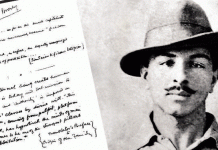The world is fighting the coronavirus pandemic and as nations compete against one another in the race to develop the first successful vaccine against it and a few nations already initiating some trials, a major challenge that several countries like India are likely to face is regarding the distribution of the vaccine once it comes into the market for generalised use. The nation is waiting like all other parts of the world to get an answer to the coronavirus pandemic in the form of an effective vaccination but the real challenge that we have before us is regarding how we will distribute the vaccine effectively given the many public health and infrastructural challenges that lie before us. It is certain, as pointed out by several experts in the field that distributing the vaccine is going to be an uphill task in the country given the issues with India’s supply chain mechanism and its underdeveloped cold storage systems.
Why is the distribution of the COVID-19 vaccine a challenge in India?
Although the world will be greatly relieved as and when the world finally finalises a vaccine against the infection and it becomes available throughout the world for the usage of citizens, yet its distribution remains a major challenge in a country such as India.
One of the major reasons why the distribution of the vaccine is a challenge in India is the inadequacy of the Indian cold chain network.
The cold chain network in India is both insufficient and inadequate in more ways than one. It can be estimated by the fact that there are roughly just 4 cold chain points to serve a population of 100,000 people in Gujarat and there is just one cold chain point for the same number of people in the state of Jharkhand.
As the world prepares itself excitedly for the launch of a vaccine against coronavirus, this is a major challenge that stares at India. We also have to note that India is one of the leading vaccine manufacturers in the world and therefore it may have a better access to vaccines once they are out as compared to many other countries belonging to the developing world but the question is whether its inadequate supply chain and cold storage networks will cause major hinderances in its path.
The Serum Institute of India is alone responsible for producing 1.5 billion vaccines for various infections and diseases every year and it is estimated that by 2021 it will produce more than 1 billion doses of Novavax vaccine.
Yes, we may be better off than many countries from the developing world as far as our capabilities for producing the vaccine are concerned, but the point really is whether we are equally equipped when it comes to the distribution of the coronavirus vaccine which will require improved cold supply networks and distribution channels.
Can we adequately make the most of the vaccine without addressing these concerns? The concern becomes even greater if we think of the most densely populated states in the country where cold storage systems are far less than adequate and the supply chains are slower than needed. This curtailed infrastructure will surely prove limiting as far as the distribution of the COVID-19 vaccine is concerned.
We certainly need to work hard towards addressing gaps in the existing infrastructure so that once the vaccine is out it may be distributed adequately.
The Government Plans to Inoculate 300 Million Vulnerable People by August 2021
The Government has shared its plans of giving the most vulnerable sections of the population a priority when it comes to the distribution if the vaccines in the first couple of rounds. This will translate to 600 million doses till August and this target is not easy to attain because India has a deficit of cold storage networks.
An important and crucial element of storage networks are depots and refrigerated vans and given the condition in which India’s cold storage network now finds itself, the distribution and storage of the proposed vaccine will be nothing but a far fetched dream.
It is being planned that the current immunisation program in the country would be leveraged for the storing and distribution of the coronavirus vaccine plan even while ensuring that the regular immunisation program doest stand to be disturbed in any manner. The plan also includes involving private cold chain companies to distribute as much as half of the required doses( 300 million doses spread across 2021)
How Does India’s Cold Chain Network Function?
It’s important to understand how the country’s cold chain network functions. It is operated through four government owned storage medical depots which are located in places like Kolkata, Karnal, Mumbai and Chennai.
These depots have the task of procuring vaccines from the manufacturers and then storing and distributing these. The state vaccine stores either arrange for their vaccines through these depots or obtain them directly from the manufacturers. These state vaccine networks then distribute the vaccine further within their states at the regional, district and sub-district levels through insulated vans that ensure that the vaccine’s effectiveness is retained through controlled and moderated temperature conditions.
Let us now acknowledge that in India, we have about 27,000 cold chain points, 76,000 cold chain equipment, 700 reefer vans, 55,000 cold chain handlers and 2.5 million healthcare workers who work as part of the vaccine logistics network as reported in Mint.
Even to have an optimum functionality for the first phase of the distribution of the vaccine drive, there is a need to amplify and expand the public sector distribution capacity at least by 2-3 times.
But it is surely not as if just magnifying the distribution and storage network will solve the problem, an equally big problem has been generated by the gaps in the existing supply chain.
But thanks to the Electronic Vaccine Intelligence Network( a completely electronic way of tracking the supply chain in real time that has been implemented already in 32 Indian states and union territories) the distribution and supply of the COVID-19 vaccine will now become easier. But there are many infrastructural gaps between this too and some of the problems include stocking out of products or reported wastage of vaccines at facilities.
In fact, a study conducted by the WHO in 2018 showed that India wasn’t doing too well as far as vaccine management is concerned.
The country also did poorly as far as estimating the demand for vaccines and syringes, procedures of the MIS system etc were concerned.
The disparity between different states as far as the cold storage network is concerned is also a problem.
States like Gujarat have a relatively developed cold storage whereas those like Bihar, Uttar Pradesh and Jharkhand fare the worst.
And as experts would tell us, it is difficult to improve the cold storage networks in these states given the limited time and the fact that most of the cold storage networks are run by private players who are reluctant to spread out into the lesser developed states.
Identifying the Beneficiaries to Make the Vaccine Distribution Effective
A very important challenge that lies before India apart from the cold storage networks is regarding the implementation of the immunisation drive.
Critical to this is the process of identifying the beneficiaries and making sure that they arrive on the day of the vaccination, ensuring that the second dose is held at the right time requiring great degrees of micro level planning and also paying enough attention to the delivery of the vaccine to different states and union territories of the country.
India will also need to work on steps like developing a high quality documentation and monitoring mechanism and extreme micr0-level planning to make sure that the vaccination drive becomes successful and effective.
While the above points highlight the deeply entrenched issues and challenges of distribution and storage of the COVID-19 vaccine in India given an underdeveloped cold storage and supply system, it will be interesting to see how effectively India is able to execute the process of acquiring, storing and distributing the much needed vaccine amid the pandemic.














